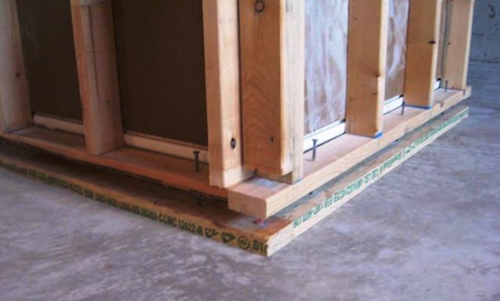Expansive soils are fine-particle, clay-based soils that expand in volume when they are exposed to water. Different clay types have different expansive characteristics.
Expansion is caused by an electro-chemical attraction between water molecules and fine clay particles. Materials consisting of fine particles have greater surface area than materials containing large particles, and because clay has a lot of surface area per given volume, it attracts a lot of water. Water attaching to particle surfaces without being absorbed by them happens through a process called adsorption. Surface tension is a contributor to this process.
Expansive soils can damage foundations and concrete floor slabs through uplift or lateral expansion. In a typical year in the U.S., expansive soil causes greater financial loss than hurricanes, floods, earthquakes, and tornados combined.
Special Building Methods
Special methods must be used when installing a foundation on expansive soil in order to avoid future damage as the soil expands. One method is to rest the foundation on piers that extend down below the zone of water-content fluctuation, where the soil is stable, or down to bedrock. Piers that extend to stable soil but don’t rest on bedrock may rely on friction instead of direct bearing to support the structural load.
Floating Plates
Another method used to accommodate heaving is the use of doubled or floating bottom plates. When inspecting a home in an area known to have expansive soil, inspectors should identify basement walls framed without this method as defective. In a newer home, inspectors should recommend that corrections be made. If walls have been in place for a significant period of time with no damage occurring, this condition will probably not be a problem unless something happens that introduces water into the soil beneath the basement floor. This might be a leak from plumbing pipes, valves or fixtures, or leaking of laundry appliances. Inspectors should state this in their reports.
Cracks caused by heaving may be wider at the top, as shown in the illustration above, but this condition can also be caused by settling toward one corner.
Vertical displacement creates trip hazards, and you may see concrete ground down to alleviate this problem, as in the photo above. Typical mitigation involves correcting the grade and/or installing a plastic membrane beneath the topsoil around the home’s perimeter to act as a barrier to runoff seeping down next to the foundation.




